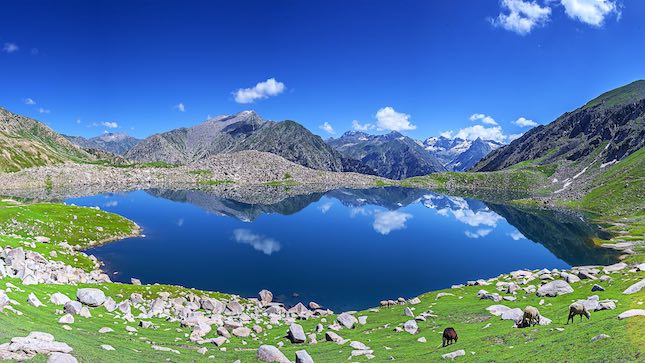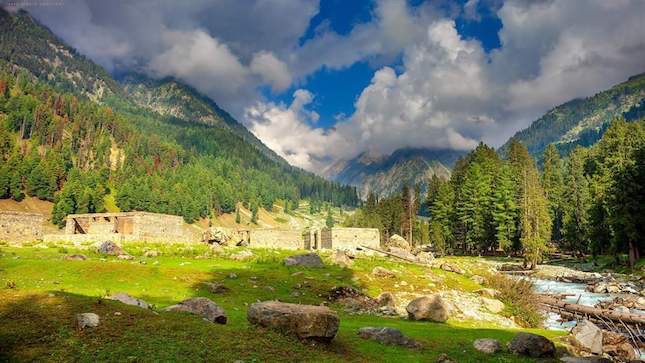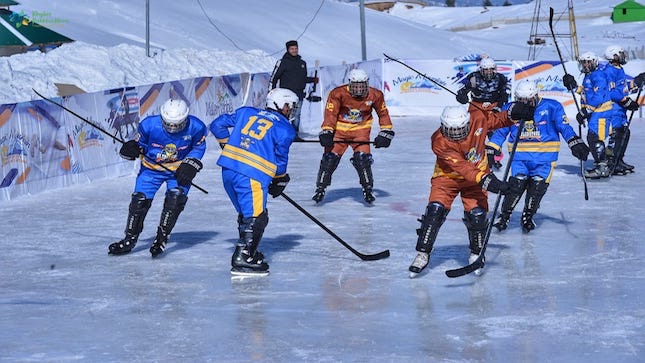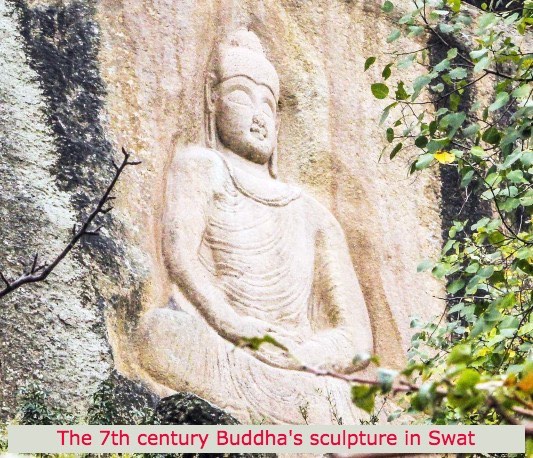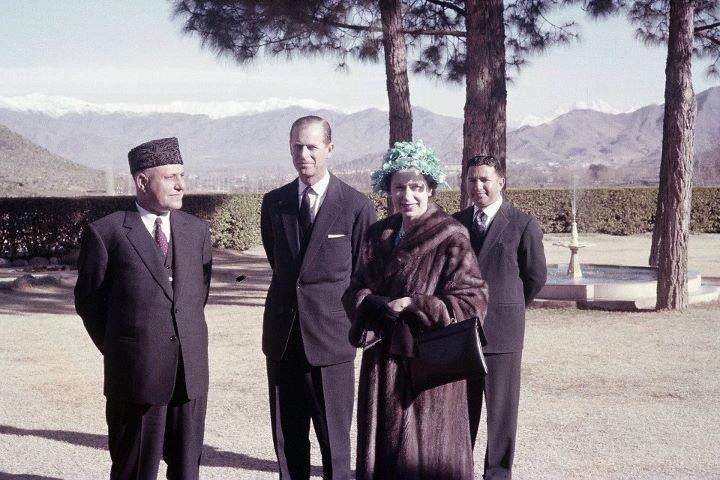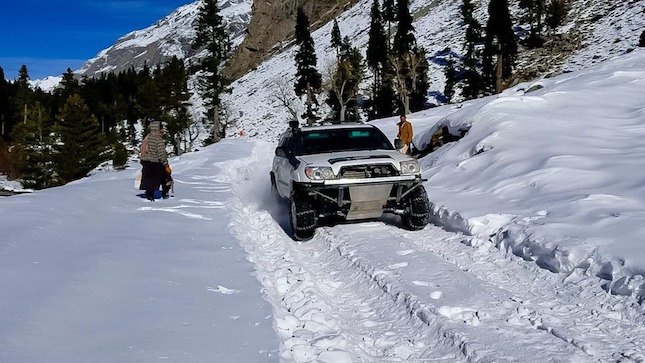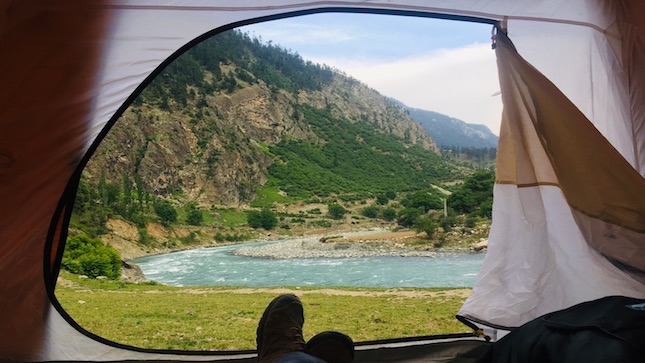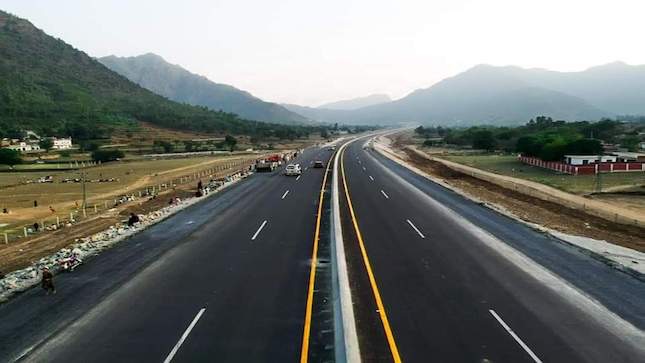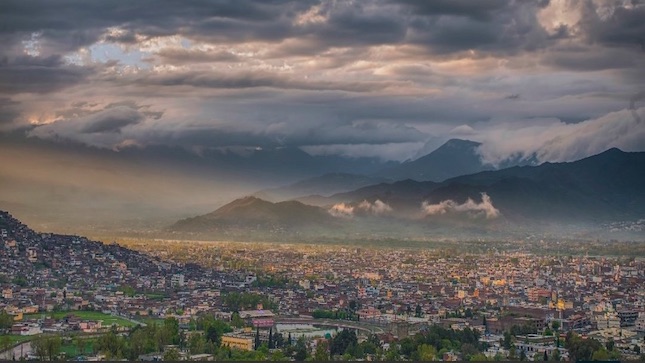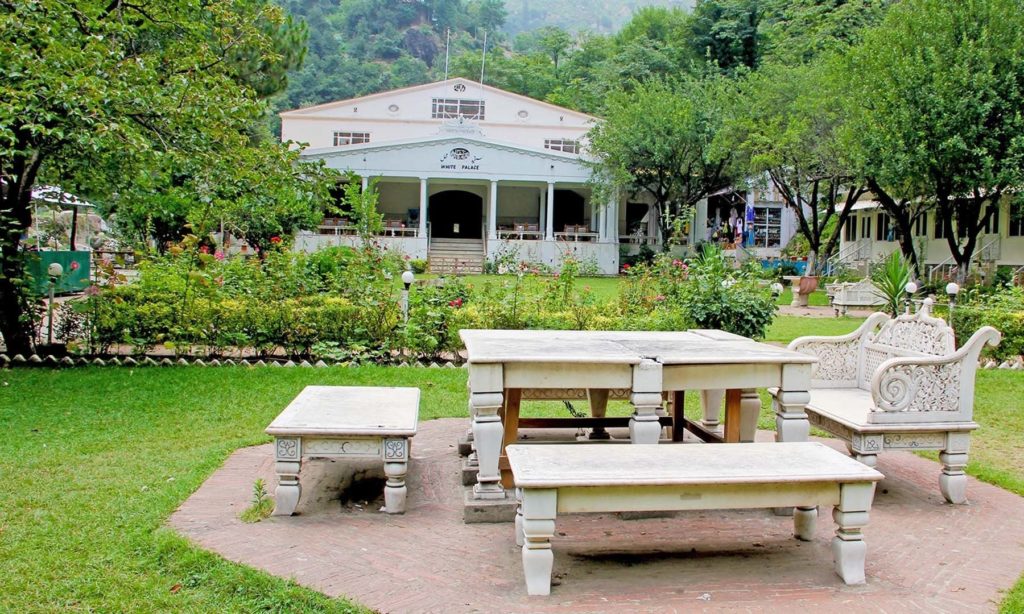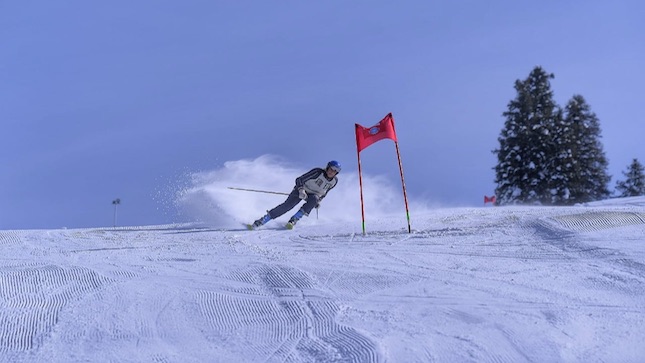Swat is a breathtaking destination in northern Khyber Pakhtunkhwa, Pakistan, often called the “Switzerland of the East” or the “Paradise on Earth.” This stunning Swat Valley spans 5,337 sq km (2,061 sq mi) and is renowned for its lush landscapes, serene rivers, and scenic beauty. Located just 247 km (153 miles) from Islamabad, Swat Valley is a must-visit for travelers seeking nature, adventure, and tranquility.
Key Features of Swat
Swat is famous for its snow-capped mountains, lush valleys, glaciers, waterfalls, and rivers, creating a breathtaking landscape. The region is often compared to Switzerland for its natural wonders and is known for its perfect outdoor sports like skiing, hiking, and camping. Beyond its scenic beauty, Swat is celebrated for its captivating souvenirs and local treasures. From stunning gemstones and jewelry to handwoven textiles and beautifully carved wooden furniture, the region’s craftsmanship is on display. Visitors can savor delightful treats like fresh fruits, pure honey, traditional sweets, and mouthwatering trout fish, ensuring lasting memories of their trip.
Adding to its allure, Swat’s historical significance shines through ancient archaeological sites and ruins. Influencing Buddhism and the Silk Road trade, it served as a crucial part of the Gandhara civilization. Its unique cultural heritage, including its former independence as “The Yusafzai State of Swat,” intrigues history enthusiasts and curious travelers eager to delve into its fascinating past.
Landscape of Swat
Swat Valley, nestled in the foothills of the Hindukush range, is a paradise for nature lovers, adventure seekers, and those in search of tranquility. The valley’s dramatic elevation, rising from the south to over 6000 meters (19,685 feet), is adorned with snow-capped peaks, lush forests, rolling meadows, glacial landscapes, and crystal-clear springs, making it a diverse and breathtaking destination. Its rugged mountains provide ideal conditions for hiking, trekking, and meditation, attracting visitors from around the world. The valley’s varied geology contributes to its stunning scenery, where towering mountains contrast beautifully with the fertile plains and dense woodlands. Natural springs, scattered throughout the region, are a source of pure, refreshing water, often believed to have health benefits. Whether exploring the high-altitude glaciers, pristine waterfalls, or serene valley floors, travelers are met with awe-inspiring natural beauty at every turn.
Adding to Swat’s charm are its rivers, lakes, and springs, which not only enhance the region’s scenic splendor but also sustain local communities and ecosystems. The Swat River, along with its tributaries like the Panjkora, Gabral, Ushu, and Matiltan Rivers, winds gracefully through the valley, providing water for irrigation and recreational activities such as fishing and boating. Swat is also home to nearly 35 breathtaking lakes, each with a unique character and historical significance. These crystal-clear freshwater lakes and bubbling springs serve as a habitat for diverse wildlife and offer a serene retreat for those seeking peace in nature. Beyond its natural beauty, Swat’s fertile lands make it a prime location for fruit orchards, where apples, cherries, apricots, and plums thrive. Tourists can enjoy fruit-picking experiences, savoring the valley’s fresh produce while immersing themselves in its agricultural charm. This blend of natural wonders, adventure, and cultural richness makes Swat an irresistible destination for visitors from all walks of life.
Adventure and Thrill Activities in Swat: A Year-Round Playground
Swat offers a wide range of outdoor activities, catering to tourists throughout the year with its diverse landscapes and adventures. During the summer months, visitors can engage in hiking, camping, cycling, rock climbing, and horseback riding, while soaking in the stunning views of the valley. The region also offers water-based activities such as swimming, rafting, and fishing, and those who prefer a more leisurely experience can take chairlift and cable car rides to enjoy the panoramic views. Swat is also home to rich cultural traditions, with events like the Kalam Mela, a festival that showcases local music, dance, and art. In the winter, Swat turns into a winter sports haven, with skiing, snowboarding, ice skating, sledding, ice hockey, and curling attracting both enthusiasts and competitors. Skiing and snowboarding competitions draw crowds, offering an exciting spectacle for tourists. The Kalam Jeep Snow Rally, a thrilling motorsport event through snow-covered terrain, adds to the region’s winter appeal.
For those seeking a deeper connection with nature, Swat offers numerous campsites and free caravans, making it an ideal location for family trips and outdoor exploration. Wild camping is allowed, giving visitors the chance to enjoy the beauty of remote areas while following environmental and safety practices. Hiking has become increasingly popular, with various trails available to suit all levels, from easy walks to challenging treks through the rugged mountains. Backpacking is also a great way to combine hiking and camping, allowing visitors to explore the forests and mountain peaks, all while building physical endurance and gaining unforgettable experiences in Swat’s breathtaking landscapes.
History of Swat
The history and archaeology of Swat are intertwined with a rich and ancient heritage. Swat was once a significant center of the Gandhara civilization, playing a crucial role in the development of Buddhism and the Silk Road trade. The region’s archaeological sites boast ancient stupas, monasteries, sculptures, and relics, providing valuable insights into its glorious past. Swat’s historical significance is evident in the remnants that showcase its cultural and artistic contributions.
Swat’s archaeological materials provide valuable insights into its cultural relations with neighboring regions and beyond, spanning over 5,000 years of history. Today, historians, archaeologists, and enthusiasts are captivated by Swat’s historical and archaeological wonders, making it a compelling destination for those eager to delve into its intriguing past.
The State of Swat
From 1849 to 1969, Swat retained its affluence and independence as the sovereign state “The Yusafzai State of Swat.” During the British Empire’s rule of the Indian subcontinent from 1858 to 1947, Swat remained free and self-governing. The proud local Yusafzai Pashtuns maintained complete control over Swat. On 14th October 1969, the State of Swat voluntarily merged with Pakistan. This merger happened twenty-two years after Pakistan gained independence from British rule in 1947.
In 1961, Queen Elizabeth II and Prince Philip visited The Yousafzai State of Swat and were hosted by Wali (King) of Swat Miangul Jahanzeb. During her stay, the Queen remarked on the striking resemblance between Swat’s snow-capped mountains and Switzerland’s scenic beauty, leading her to call Swat the “Switzerland of the East.” The royal couple engaged in shooting expeditions, and while the Duke hunted, the Queen explored relics at Swat Museum. She sent Winston Churchill a lighthearted telegram, playfully saying: “Greetings from Malakand”, while also recalling his past experiences there and acknowledging Swat’s unconquered status.
The People and Language of Swat
Swat is predominantly inhabited by the Pashtun ethnic group known as the Yousafzai, who trace their roots to Afghanistan. The Afghan Yousafzai tribe settled in the region during the 16th century, establishing the Yousafzai State of Swat, which played a significant role in the region’s history. Over time, the Yousafzai tribe grew and became the dominant ethnic group in the area, shaping the local culture, traditions, and governance. According to the latest census, Swat’s population is around 2.3 million, with Pashtuns making up 90.28% of the population. The rest of the population is primarily composed of Kohistanis, who account for 8.67%. This demographic makeup contributes to the unique cultural heritage and historical significance of the region.
The primary language spoken in Swat is Pashto, which is the mother tongue of the majority of the population. Urdu is widely understood and serves as a secondary language, while English is also spoken to some extent, particularly by younger generations and those involved in tourism. This multilingual environment allows tourists to comfortably interact with locals, as English and Urdu are commonly used for communication. Persian is less commonly spoken, though some locals, particularly older generations, may have some familiarity with it due to historical connections. For tourists visiting Swat, the ability to converse in English or Urdu will generally be sufficient for most interactions, making it easier to explore and connect with the local culture.
The Hospitality of Swat
Pashtun culture in Swat is deeply rooted in a rich and vibrant heritage, with traditions that span centuries. At the heart of this culture is Pashtunwali, the traditional code of conduct that governs the behavior and social interactions of Pashtun people. This code places a strong emphasis on virtues like hospitality, justice, bravery, honor, and loyalty, and plays a vital role in shaping daily life and community values. Pashtunwali dictates how individuals should interact with others, prioritize fairness, and uphold family and community ties. It also fosters a strong sense of responsibility toward protecting guests, ensuring that they are treated with the utmost respect and care.
For tourists visiting Swat, the experience is often defined by the warmth and hospitality extended by the locals, a reflection of the principles of Pashtunwali. Visitors are greeted with open arms and are often offered food, tea, and accommodation, often free of charge, as a gesture of goodwill and respect. This hospitality goes beyond simple gestures and is deeply ingrained in the culture, making guests feel valued and cared for. However, in return, tourists are expected to honor local customs, respect traditions, and embrace the values of the community. By doing so, they foster mutual understanding and create a positive cultural exchange, enriching their visit and ensuring a memorable experience in Swat.
The Hujras of Swat
In Swat, a unique aspect of local culture is the tradition of Hujras – guesthouses that are an integral part of the region’s hospitality. Hujras serve as a place where visitors, whether family, friends, or even strangers, are welcomed with warmth and respect. These guesthouses are often found in rural areas and play a significant role throughout Swat. Traditionally, hujras are built in the homes of elders, and their purpose is to offer free accommodation to guests, especially travelers, in a humble yet respectful manner. Along with a place to stay, guests are often provided with free food, such as traditional dishes and tea, reflecting the generosity and hospitality of the people of Swat.
Guests visiting a hujra are treated to local foods and tea, with conversations and stories flowing freely. In some areas, hujras are also used for social gatherings, where local men meet to discuss matters of importance, exchange news, or simply enjoy each other’s company. While hujras in Swat may not always have modern amenities, they offer a deep cultural experience and a chance to interact with locals in an intimate setting. For tourists, staying in a hujra can be an incredible opportunity to immerse themselves in Swat’s rich culture, experience the warmth of its people, and enjoy free food and accommodation, making their visit even more memorable.
Festivals and Adventure Sports in Swat
Swat, known for its stunning natural beauty, is increasingly becoming a hotspot for adventure sports and cultural events. The region’s skiing and snowboarding competitions at Malam Jabba attract both national and international athletes, offering thrilling experiences on well-maintained slopes with breathtaking mountain views. Winter also brings the Kalam Jeep Rally, where off-road vehicles race through snow-covered tracks, testing the skills of drivers in extreme conditions. These events have turned Swat into a premier winter sports destination, drawing adventure enthusiasts from across the country and beyond.
Kalam Summer Festival is one of Swat’s most popular annual events, celebrating the region’s vibrant culture, music, and adventure sports. Held in the scenic Kalam Valley, it features Pashtun music, folk dances, and cultural performances, along with thrilling sports like paragliding, motorbike stunts, and archery. Visitors can also enjoy camping with bonfires and live music, creating an unforgettable outdoor experience under Swat’s starlit skies. Another significant event is Pashtun Cultural Day, which showcases the region’s heritage through traditional crafts, poetry, and local delicacies. Whether it’s winter sports, jeep rallies, or cultural festivals, Swat offers a diverse range of events for adventure seekers and culture lovers alike.
The Weather of Swat
The Swat weather is known for its moderate and changeable nature, seldom becoming extremely hot. Despite being a relatively small valley, one of the most surprising aspects of the Swat climate is its significant variation from one region to another. Traveling just 20-30 minutes in any direction can lead to a completely different weather experience, sometimes even witnessing “four seasons in one day.”
During the Spring season in Swat, average maximum temperatures typically range from approximately 7°C (45°F) to 13°C (55°F) in the months of March, April, and May. As summer arrives in June, July, and August, the valley experiences its warmest months, with average maximum temperatures ranging from around 15°C (59°F) to 17°C (63°F).
In Autumn (or Fall), temperatures in Swat are likely to range from approximately 8°C (46°F) to 14°C (57°F) from September to November. Finally, the months of December, January, and February mark the coldest period in Swat, with the average maximum temperature usually hovering around 5°C (41°F).
Swat experiences snowfall during the winter months, typically from December to February. The valley is transformed into a winter wonderland as snow blankets the majestic mountains, lush green valleys, and scenic landscapes. Snowfall in Swat adds to its allure, attracting tourists and locals alike to revel in the beauty of the snow-capped surroundings and enjoy winter sports and activities.
The Best Time to Visit Swat
The best time to visit Swat is during the spring and summer months, which typically span from April to October. During this period, the weather is pleasant, with mild temperatures and blooming landscapes, making it ideal for outdoor activities, sightseeing, and enjoying the natural beauty of the valley. During the spring season, from March to May, visitors are treated to a vibrant spectacle of blooming flowers and lush greenery, while the summer months, spanning from June to August, offer comfortable temperatures that facilitate hiking, trekking, and exploring the various attractions of the valley.
Winter in Swat is ideal for winter sports such as skiing, snowboarding, and snowshoeing. The valley’s snow-covered landscapes and favorable weather conditions during the winter months, from December to February, create the perfect setting for enthusiasts to indulge in these exciting activities. However, this time may not be the best for all travelers, as heavy snowfall can make some areas inaccessible, and outdoor activities like trekking might be limited.
Hotels and Accommodation in Swat
Swat offers many hotels and other accommodations catering to a wide range of budgets and preferences. From luxurious resorts and high-end hotels to cozy guesthouses and budget-friendly options, there is something for every traveler. Many hotels and other accommodations in Swat are equipped with modern amenities such as Wi-Fi, hot water, heating, and in-house restaurants serving both local and international cuisine. Some hotels also offer additional services like guided tours, adventure packages, and transportation, making it easier for visitors to explore the valley. Whether you prefer a riverfront lodge, a mountain-view resort, or a peaceful hillside cottage, Swat’s accommodations provide stunning views and a relaxing atmosphere. Since Swat is a popular tourist destination, it is highly recommended to book accommodations in advance, especially during peak seasons such as summer and winter holidays.
For those seeking urban convenience, the downtown areas of Mingora and Saidu Sharif offer a wide variety of hotels and other accommodations. These locations provide easy access to local markets, restaurants, transport hubs, medical facilities, and historical sites like the Swat Museum and White Palace. Staying in these urban areas also allows for easier connectivity to more remote areas such as Kalam, Malam Jabba, and Bahrain, where accommodations may be more limited. During peak seasons, advance booking is crucial for ensuring a smooth and hassle-free stay. For a more immersive cultural experience, some guesthouses and boutique lodges offer traditional Pashtun hospitality, where visitors can enjoy local food, music, and architecture, providing a unique and memorable stay in Swat.
Camping in Swat
Camping in Swat provides an incredible opportunity to experience the valley’s breathtaking natural beauty up close. The region offers numerous pristine camping spots surrounded by towering mountains, lush meadows, and crystal-clear lakes. Popular locations like Kalam Valley and Mahodand Lake are perfect for those seeking a tranquil camping experience, with the option to fish, hike, and explore the surrounding forests. Malam Jabba, a renowned ski resort in winter, becomes an ideal summer camping spot with its green hills and expansive views, offering a combination of outdoor activities like hiking, trekking, and star-gazing. For those looking for a more serene, riverside experience, Fizagat Park near Mingora provides a peaceful setting by the Swat River, making it a great option for a relaxing getaway.
When camping in Swat, it’s important to prepare for variable weather conditions, especially in higher altitudes. Even during summer, temperatures can drop quickly at night, so bringing the right camping gear, including a warm sleeping bag, waterproof tent, and proper clothing, is essential. It’s also advisable to carry enough food, water, and a reliable water filtration system, as remote camping sites may have limited access to supplies. For a more immersive experience, hiring a local guide can be helpful, especially when venturing into more rugged and isolated areas. Whether you’re setting up camp beside a serene lake or deep in the mountains, camping in Swat offers adventure and tranquility in equal measure, making it a perfect destination for nature lovers and outdoor enthusiasts.
Trekking and Hiking Adventures in Swat
Swat, often referred to as the “Switzerland of Pakistan,” offers some of the most spectacular trekking and hiking opportunities in the country. The region’s breathtaking landscapes, ranging from lush green valleys to rugged mountain peaks, make it an ideal destination for outdoor enthusiasts. Popular hiking trails in Upper Swat, such as those leading to Kalam, Ushu Valley, Gabin Jabba, and Malam Jabba, offer tourists the chance to immerse themselves in the natural beauty of the area. Whether you’re an experienced trekker or a beginner, Swat caters to all levels, with trails ranging from moderate hikes to more challenging climbs that lead to remote mountain areas. Trekking through Upper Swat allows you to explore diverse ecosystems, picturesque rivers, and alpine meadows while witnessing the local flora and fauna in their natural habitat.
For those seeking an adrenaline-filled adventure, the towering peaks of the Kohistan Range and Hindu Kush Mountains offer thrilling challenges, with hiking routes leading to high-altitude lakes, glaciers, and ancient ruins. Along these routes, trekkers will encounter rugged terrain, peaceful solitude, and the opportunity to interact with the welcoming local communities. For a more organized trekking experience, tourists can join local events and group hikes, which are frequently held throughout the year. These events offer guided tours, ensuring a safe and informative journey. While exploring these trails, hikers should be prepared with proper gear and guidance, as the terrain can be demanding. Overall, trekking and hiking in Upper Swat provide not just physical challenges but also a chance to connect deeply with the area’s rich cultural heritage and stunning natural environment.
Swat’s Unique Handicrafts, Antiques, and Souvenirs
Swat is known for its rich cultural heritage, and visitors can find a variety of handicrafts and souvenirs that reflect the traditional craftsmanship of the region. The valley’s Pashtun culture influences many of the locally made items, with artisans creating beautifully detailed crafts using local materials such as wood, metal, and textiles. Wooden items, including intricately carved furniture, boxes, and kitchenware, are popular among tourists. The traditional Swati carpets and shawls, woven by hand, are also highly sought after, known for their durability and stunning patterns that represent the culture and history of the area.
In addition to these, Swat is famous for its emerald stones, which are among the finest in the world. Swat emeralds are highly valued for their vivid green color and clarity, and many shops in the region offer emerald jewelry, including necklaces, rings, and earrings, often set in gold or silver. These emeralds make for a unique souvenir that embodies the natural beauty of the valley and its rich mineral resources. Visitors can also find handmade jewelry crafted from local materials, such as silver and brass, with traditional designs. The region is also known for its antique items, including vintage pottery, brassware, and other traditional collectibles that tell the story of Swat’s rich history. Other popular souvenirs include embroidered garments, Pashmina shawls, pottery, and leather goods, making the markets in Mingora, Saidu Sharif, and other towns a great place to explore and purchase authentic items that capture the essence of Swat’s cultural and natural beauty.
The Cuisine of Swat
Swat offers a diverse array of local traditional food that delights both residents and visitors. The Swat cuisine is a harmonious fusion of Pashtun, Afghan, Persian, and Turkish culinary traditions, resulting in a unique blend of flavors, aromas, and textures. In contrast to the spiciness often found in Pakistani and Indian cuisine, Swat dishes feature a mild heat, showcasing the use of locally grown herbs and delicate spices. The culinary staples include bread, rice, a variety of meats such as lamb, beef, chicken, and freshwater fish, along with an abundance of fresh vegetables, fruits, dairy products like yogurt, whey, and cheeses, as well as honey, assorted nuts, and dried fruits.
When exploring Swat’s culinary offerings, be sure not to miss the mouth-watering Chapli kebab, Kabuli pulao, Tikka kebab, Tikka skewers, and the delectable grilled dishes prepared over charcoal. Additionally, indulge in the unique Dum Pukht style of cooking and savor the exquisite Swat trout fish. Among the local delights, the signature dishes of Chukand or Warjalay stand out, elevating the culinary experience and showcasing the distinct charm of the region’s gastronomy.
Safety in Swat
Swat is indeed a peaceful and secure destination, extending a warm welcome to both domestic and foreign tourists. The people of Swat are renowned for their heartfelt hospitality, embracing visitors from every corner of the world, irrespective of their gender or nationality. Every year, hundreds of thousands of tourists choose Swat as their preferred holiday destination, where they joyfully and securely celebrate their vacations amidst the tranquility and warmth of this picturesque valley.
Moreover, the local government and the community have made significant investments in new tourism projects and have placed the utmost priority on ensuring the safety and security of both residents and visitors. These joint efforts serve to maintain Swat as a safe and delightful haven for all travelers, encouraging them to explore and revel in the captivating landscapes and cultural treasures that the region has to offer.
Emergency Assistance in Swat
Healthcare and Medical Assistance in Swat
Medical assistance in Swat is available through various healthcare facilities, with both public and private hospitals serving the local population and tourists. Major towns like Mingora and Saidu Sharif offer better medical services, with hospitals, clinics, and pharmacies providing essential healthcare. Saidu Sharif Hospital and Mingora District Hospital are the largest public hospitals in the region, offering emergency care, surgery, and specialized treatments. For private healthcare, Khyber Medical Centre and Swat Medical Complex in Mingora provide modern medical services, including general consultations, diagnostics, and specialized treatments. Gul Medical Complex in Mingora and Medicare Hospital in Saidu Sharif are also reputable private hospitals known for their quality care and advanced medical facilities.
In more remote areas of upper Swat, such as Kalam, Bahrain, and Malam Jabba, access to advanced healthcare may be limited. However, you can still find medical stores, pharmacies, or even basic medications in general stores. These local shops typically stock essential medicines like pain relievers, antibiotics, and first-aid supplies, which can provide some level of care for minor illnesses and injuries. While rural health centers offer basic healthcare, for more specialized treatments, tourists may need to travel to larger towns or hospitals. It’s advisable for tourists to carry a well-stocked first-aid kit, their personal medications, and ensure they have travel insurance that covers medical emergencies, especially when venturing into remote or rugged areas.
Public Transport in Swat
Public transport in Swat is a combination of buses, coasters, and shared vans, making it relatively accessible for travelers between major towns like Mingora, Saidu Sharif, and Kabal. Buses and coasters are the most common and affordable means of travel, connecting various towns and villages within the region. Shared vans, typically used for longer distances, are also a popular choice due to their cost-effectiveness and ability to carry multiple passengers. Within the cities, auto-rickshaws are widely used for short trips, offering a convenient way to get around town.
For more remote areas or higher-altitude destinations, such as Malam Jabba, Kalam Valley, and Mahodand Lake, private taxis and jeep rides are commonly used. Jeeps are particularly necessary to navigate the rugged terrain and narrow mountain roads. While public transport is fairly reliable in urban and populated areas, it can be limited or less frequent in rural regions, making it important to plan travel accordingly. In general, Swat’s public transport is functional, but for a more customized experience, taxis and jeeps are often preferred, especially for tourists seeking to explore the scenic and remote parts of the valley.
Travel to Swat
To reach Swat Valley, there are several travel options, each with varying distances and routes:
1. By Air: The domestic Swat Airport, known as Saidu Sharif Airport, is currently closed for flights due to maintenance and refurbishment works. As a result, the closest airports to Swat are either Bacha Khan International Airport in Peshawar or Islamabad International Airport.
2. By Road: Swat is conveniently accessible by road from various cities in Pakistan. The primary route is via the Swat Motorway (M16), popularly known as Swat Expressway, which provides a seamless connection between Islamabad and Peshawar to Mingora, the largest city in Swat.
Travelers coming from Peshawar have an alternative route available through the N45, passing through Nowshera, Mardan, and Batkhela. However, it’s essential to note that the alternative route through the N45 is an older hilly road with steep slopes, which may result in a longer travel time to reach Swat.
Road Distance from Major Cities in Pakistan to Swat
| Swat Distance Summary Table | ||||
| City or Place name | Distance | Travel Time | Transportation | Motorway/ Route |
| Islamabad to Swat | 230 km (143 miles) | 3 hours + | Car/ Public Transport | AH1/M-1 and M-16 |
| Peshawar to Swat | 292 km (120 miles) | 2 hr 50 min | Car/ Public Transport | M-1 and M-16 |
| Lahore to Swat | 564 km (350 miles) | 6 hr 50 min | Car/ Public Transport | M-2, M1, and M-16 |
| Karachi to Swat | 1,598 km (993 miles) | 18 hr 45 min | Car/ Public Transport | M9, N55, M5, M4, M2, M16 |
3. By Car: Traveling to Swat by car is a favored and convenient choice for tourists. The journey provides an opportunity for travelers to relish a scenic drive and make stops along the route to immerse themselves in the region’s breathtaking natural beauty.
4. By Bus: Regular bus services are available from major cities, including Islamabad, Peshawar, Lahore, and Karachi to Mingora and other towns in Swat.
5. By Train: Although there is no direct train service to Swat, travelers can take a train to Peshawar or Rawalpindi/Islamabad and then proceed to Swat by road.
Attractions in Swat
Swat, with its abundant natural beauty and enchanting landscapes, offers a plethora of stunning destinations for travelers to explore. We recommend the following must visit places, tourist attractions, and activities in Swat.
The Mingora City of Swat
Mingora serves as the gateway and arrival point to Swat, bustling with activity day and night. The lively Mingora market continues to buzz until late hours, providing a perfect blend of local culture and tourist experiences. In the heart of the city, both locals and tourists indulge in shopping and dining, making it an enjoyable hub for exploration.
For tourists heading to the more adventurous areas of Swat, Mingora Bazar offers convenience and a chance for last-minute shopping. Thousands of shops line the streets, offering a wide range of merchandise throughout the day. In addition to its vibrant market, Mingora boasts a diverse selection of accommodations, from hotels to restaurants, takeaways, cafes, and western food outlets. Whether you crave local delicacies or fast food, Mingora has something to satisfy every palate.
Saidu Sharif Swat
Saidu Sharif served as the political headquarters and administrative capital of the Swat district. As the capital, Saidu Sharif hosts the district government offices, professional educational institutes, healthcare facilities, and more.
Saidu Sharif offers a variety of tourist attractions, a range of accommodations, and dining options for visitors. These attractions include the Saidu Sharif Stupa, a reminder of the region’s Buddhist past, and the Swat Museum with its fascinating collection of artifacts. The Butkara Stupa showcases the area’s historical architecture, while Jahanzeb College and Wadudia Hall highlight the glorious recent history of the Swat State of Yousafzai. The Saidu Baba Shrine provides a spiritual experience, and Mingora Bazaar, which is a stone’s throw away, offers a vibrant local atmosphere for shopping and tasting traditional food. Exploring these sites allows visitors to immerse themselves in Swat’s rich history and culture.
Swat Museum: History from Gandhara to the Pashtun Era
The Swat Museum, located in the historical city of Saidu Sharif, is a must-visit cultural destination for tourists interested in the region’s rich history and heritage. The museum is home to a vast collection of artifacts from various historical periods, starting from the ancient Gandhara civilization, which flourished in Swat over 2,000 years ago. Visitors can explore fascinating relics such as intricate sculptures, coins, pottery, and Buddhist artifacts, offering a glimpse into the cultural and religious significance of Swat during antiquity. The museum’s exhibits also cover the period of the arrival of the Pashtun Yousafzai state of Swat, highlighting the transition of the region from ancient Buddhist influences to the establishment of Pashtun rule. This makes the museum a valuable resource for history buffs and researchers who wish to understand the evolution of Swat from its ancient roots to the influence of the Pashtun people.
In addition to its historical collections, the Swat Museum plays a vital role in preserving and showcasing the local traditions and customs of the Swat Valley. The museum’s exhibits include displays of folk art, traditional Pashtun clothing, and intricate handicrafts that give visitors an authentic insight into the daily lives and customs of the region’s inhabitants. Moreover, the museum covers more recent history, including Swat’s role in Pashtun culture and its significance in contemporary Pakistan. The Swat Museum provides an enriching and immersive experience, connecting the past to the present, and offering tourists a deeper appreciation for Swat’s cultural identity. Whether you’re a history enthusiast or simply interested in learning about the region’s traditions, the Swat Museum is an essential stop for any traveler exploring the area.
The White Palace of Swat
The Marghazar White Palace is an iconic historical landmark located in Swat. Situated in the charming Marghazar Valley, approximately 12 km (7.5 miles) from Mingora, it was originally constructed as a summer residence for the Wali (ruler) of Swat in 1940. During the Swat State era, the Marghazar White Palace hosted many important and royal personalities, including Queen Elizabeth II of the UK in 1961, who stayed here as a royal guest. Surrounded by lush green gardens and beautiful landscapes, the palace creates a serene and picturesque setting for its distinguished visitors.
Today, the Marghazar White Palace is open to the public as a tourist attraction. Visitors can explore the beautifully maintained gardens, stroll through the palace’s elegant rooms, and appreciate the historical significance of this regal structure. The palace offers stunning views of the surrounding valley and provides an insight into the royal history of Swat. For travelers interested in history, culture, and architecture, the Marghazar White Palace is a must-visit destination. It stands as a testament to the region’s rich heritage and offers a glimpse into the lifestyle of the Swat rulers in bygone eras.
Madyan Valley, Swat
Madyan is a picturesque hill station and a highly popular tourist destination in the upper northern region of Swat. Located about 51 km (31 miles) to the north of Mingora city, this captivating town offers a tranquil retreat amidst nature’s beauty. At an elevation of 1,320 m (4,330 ft), Madyan Valley stands as a gateway to the enchanting Kalam valley, which lies at a distance of 45 km (27 miles) through the scenic route of Bahrain valley. Positioned as a middle spot between Mingora and Kalam, Madyan serves as an ideal place to take a break while journeying upwards in Swat.
With charming settlements along the banks of the Swat river, Madyan Valley boasts attractive surroundings and hospitable locals. The breathtaking views of this region are enhanced by the lush green mountains, which in winter transform into a magical winter wonderland, completely blanketed with snow, offering a completely different and enchanting experience. Although the downtown area of Madyan may not be as extensive, it still offers sufficient amenities, including shops, restaurants, cafes, hotels, and more, ensuring visitors enjoy a comfortable and fulfilling stay. Year after year, hundreds of thousands of tourists flock to Madyan, drawn by its alluring natural beauty and the pleasure of basking in its delightful weather.
Bahrain Valley, Swat
Bahrain is a captivating town and a renowned tourist destination gracefully situated along the banks of the Swat River. Also known as Bahrain Valley, this charming town is located 59 km (36 miles) north of Mingora. The valley attracts numerous tourists heading towards upper northern Swat destinations like Kalam and Gabral. Bahrain offers various amenities, including shops, restaurants, cafes, and hotels, making it a popular and comfortable stopover for travelers seeking to enjoy its pleasant landscapes and delightful weather.
Bahrain’s special feature is its location where Daral and Swat rivers meet, creating a beautiful spot for meals and drinks. Exploring trout fish hatcheries and savoring dishes adds to the valley’s charm. Nearby villages offer a chance to experience nature, and Bahrain’s proximity to Madyan, Daral & Saidgai lakes makes it a perfect base camp for exploring. Travelers love the town’s picturesque landscapes and convenient amenities for relaxation and an immersive experience in Swat’s captivating beauty.
Kalam Valley, Swat
Kalam, also known as Kalam Valley, is a sub-valley of Swat located at an elevation of about 2,000 meters (6,600 feet) above sea level. It is situated at a distance of 96 km (59 miles) from Mingora city, accessible through route N95 heading north. Kalam is a major tourist destination in Swat, offering plenty of attractions and activities for visitors to enjoy.
The charming downtown of Kalam Valley provides essential amenities along the Swat riverbank. During peak tourist season, it’s advised to book in advance. Nature lovers can relish the valley’s natural wonders, lush green forests, and high-peak mountains. Summer camping by the riverbank is popular, and the annual Kalam Festival draws many tourists. Nearby places like Matiltan, Utror, and Gabral, along with remarkable lakes such as Mahodand, Kundol, and Izmis, add to the allure of this picturesque valley.
Ushu Forest: A National Park in the Heart of Swat
Ushu Forest is a national park located in the upper Swat region, further north from Kalam, offering an exceptional destination for tourists seeking an escape into nature. Nestled in the foothills of the majestic Hindu Kush mountain range, the forest is renowned for its unspoiled landscapes, dense pine forests, and breathtaking vistas. This protected area provides a serene and peaceful atmosphere, making it an ideal location for outdoor activities such as hiking, trekking, and camping. The lush greenery and tall pine trees create an enchanting environment for nature lovers, providing an immersive experience in one of the most picturesque regions of the Swat Valley.
For tourists, the Ushu Valley and its forest offer numerous exploration opportunities. The Ushu River meanders through the park, with its crystal-clear waters adding to the tranquil ambiance of the forest. Visitors can enjoy scenic walks, discover hidden waterfalls, and explore the rich natural surroundings while breathing in the crisp mountain air. The forest is also home to a variety of plant species and provides the perfect environment for birdwatching. Whether you’re a photographer capturing the stunning landscapes, a hiker exploring the rugged terrain, or a camper seeking tranquility in nature, Ushu Forest offers a truly unforgettable experience. With its accessibility from Kalam, it’s a great addition to any trip to Swat Valley, providing both adventure and relaxation for those looking to connect with the beauty of the region. Although Ushu Forest lacks many amenities, Kalam serves as a perfect base camp for exploring the area.
Mahodand Lake in Kalam Valley, Swat
Mahodand Lake, located in the Kalam Valley of Swat, is one of the most stunning and picturesque destinations in Pakistan. The lake is situated at an elevation of around 2,865 meters (9,400 feet) above sea level, surrounded by majestic snow-capped mountains and lush green meadows, making it an ideal spot for nature lovers, adventure seekers, and photographers. Mahodand Lake is often referred to as the “Lake of Fish” due to the abundance of fish species found in the area, making it a great spot for fishing. The tranquil waters of the lake are complemented by the serene beauty of the surrounding landscape, offering a peaceful retreat for those looking to escape the hustle and bustle of city life.
Visitors can reach Mahodand Lake by a jeep ride from Kalam, as the road leading to the lake is rugged and requires a sturdy vehicle. The journey itself is an adventure, offering breathtaking views of the surrounding valleys, forests, and rivers. Once at the lake, tourists can enjoy activities such as boating, fishing, or simply relaxing by the water’s edge, taking in the mesmerizing views. The area is also home to a diverse range of wildlife, including various bird species, and is a great destination for those interested in hiking and camping. Mahodand Lake is an exceptional spot to explore the natural beauty of Swat, making it a must-visit location for nature enthusiasts and travelers to the region.
Besham: The Gateway to Swat and Northern Pakistan
Besham, a key town along the famous Karakoram Highway, serves as an important gateway for travelers heading towards Swat, Gilgit-Baltistan, and other northern regions of Pakistan. Nestled amidst towering mountains and scenic valleys, Besham is a vital commercial hub. Due to its strategic location, it offers a range of facilities for tourists, including hotels, restaurants, and local markets where travelers can find traditional handicrafts, souvenirs, and local delicacies. The town is an essential stopover for those journeying toward Swat, providing a place to rest, refuel, and experience the warm hospitality of the local communities.
For adventure seekers and nature lovers, Besham is surrounded by breathtaking landscapes, with nearby rivers and valleys offering picturesque views and outdoor activities. Tourists can explore the serene banks of the Indus River, enjoy the lush green hills, or visit nearby villages to experience the unique culture of the region. The town is also known for its lively roadside eateries serving authentic Pashtun cuisine, making it a great place to experience local flavors before continuing the journey. Whether passing through or staying for a while, Besham provides a comfortable and culturally rich experience for tourists exploring the northern beauty of Pakistan.
Miandam, Swat
Miandam is a beautiful hill station located in Swat, offering a peaceful retreat for tourists seeking a break from the hustle and bustle of city life. Positioned at an altitude of around 2,000 meters (6,500 feet), it boasts breathtaking views of lush green meadows, dense pine forests, and towering mountain peaks. The area is rich in natural beauty, with a cool, refreshing climate that makes it an ideal summer getaway. Visitors can enjoy leisurely walks, picnics in the scenic surroundings, and explore the serene environment. Miandam is also home to a number of local tribes, and tourists can immerse themselves in the traditional culture and warm hospitality of the Swati people.
In addition to its tranquil atmosphere, Miandam offers a range of outdoor activities for adventure enthusiasts. Hiking, trekking, and fishing are popular pastimes, with nearby rivers and lakes providing perfect spots for relaxation and recreation. The area’s accessibility from Mingora, the main city of Swat, makes it a convenient destination for those looking to explore the natural beauty of the region. Whether you’re seeking adventure, relaxation, or a chance to connect with nature, Miandam offers a unique and memorable experience for every type of traveler.
Malam Jabba, Swat
Malam Jabba, a picturesque hill station and sought-after tourist destination, is situated 45 km (28 miles) away from Mingora in the northeast of Swat. At an elevation of 2,804 meters (9,199 ft), the famous Malam Jabba ski resort and chairlift rides are among the main attractions of the region. Additionally, the area offers a number of comfortable hotels, a variety of restaurants, and other amenities and services.
During the summer, visitors to Malam Jabba can enjoy a range of activities, including nature walks, camping, local cuisine, chairlift rides, hiking, and immersing in the vibrant summer festival. The picturesque landscapes, cool mountain weather, and friendly locals offer a perfect retreat for nature lovers and adventure seekers in the captivating Swat Valley. During the winter, Malam Jabba offers a paradise for winter sports enthusiasts, with its renowned ski resort attracting visitors from near and far. Tourists can indulge in skiing, snowboarding, and other winter activities on the pristine slopes of the snow-capped mountains. The enchanting winter festival adds to the festive atmosphere, allowing visitors to experience local culture and traditions amidst the breathtaking scenery of Swat.
Gabin Jabba, Swat
Gabin Jabba, an enchanting tourist destination in Swat, is situated approximately 58 km (36 miles) north of Mingora. The name “Gabin Jabba” originates from Pashto, meaning “Honey Marshes” in English. Perched at an elevation of 2582m (8471ft) above sea level, this captivating spot lures tourists with its picturesque green meadows, dense forests, snow-capped mountains, mineral springs, and towering peaks, providing an immersive experience amidst nature’s splendor.
Gabin Jabba, known as the “garden of medicinal plants,” captivates visitors with its natural beauty and pleasant summer climate. Tourists are drawn to the locally grown products, the freshwater trout fish farm, and the area’s wild honey, all offering delightful tastes and health benefits. While there are no traditional hotels available, the charming Camping Pod in Swat Gabin Jabba is an eco-friendly option. Gabin Jabba also provides a secure camping environment for self-camping.
Janshae Meadows: A Tranquil Retreat in Swat
Janshae Meadows is a hidden treasure in Swat, offering an idyllic escape for nature lovers and adventure seekers. Situated at a high altitude, the meadows provide stunning panoramic views of lush green fields, towering mountains, and snow-capped peaks. During the summer, the meadows are covered with vibrant wildflowers, creating a picturesque landscape that’s perfect for photography and outdoor activities. The cool, fresh air and peaceful atmosphere make it an excellent spot for a relaxing picnic, outdoor cooking, or a BBQ with family and friends. Since there are no modern amenities, the area offers a rustic, back-to-nature experience, ideal for those looking to disconnect from the hustle and bustle of everyday life.
In addition to enjoying the natural beauty, Janshae Meadows is a great destination for hiking and exploring the surrounding landscapes. The area offers several trails that lead to breathtaking viewpoints, where visitors can take in the sweeping vistas of Swat’s countryside. For those who enjoy camping, the meadows are an excellent place to set up a tent and spend the night under the stars. The lack of facilities means that visitors must come prepared, but it adds to the charm of the experience, offering a chance to immerse oneself fully in nature. Whether you’re seeking an adventurous hike, a relaxing day of outdoor cooking, or simply a peaceful retreat surrounded by stunning scenery, Janshae Meadows is an unforgettable destination.

